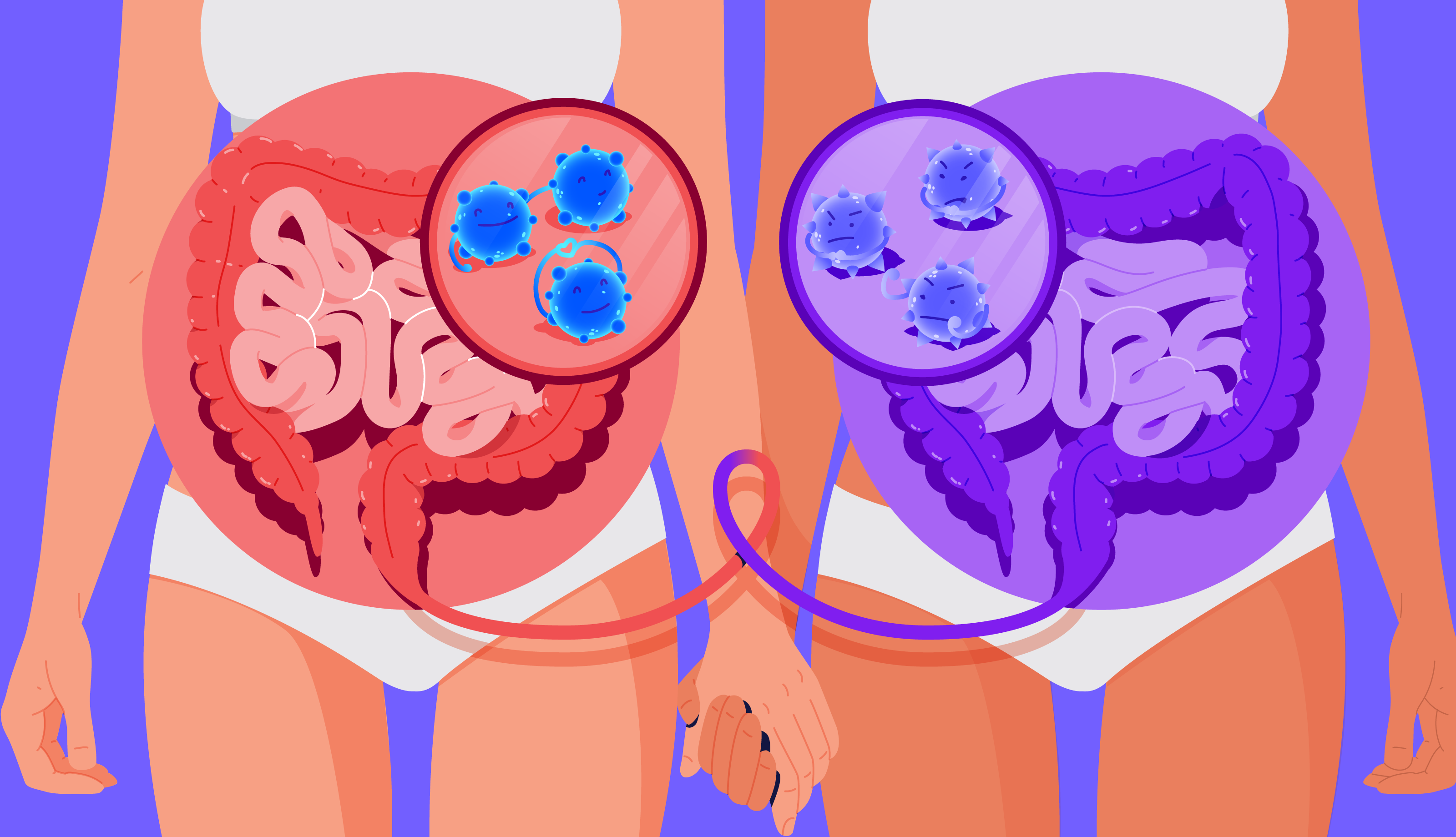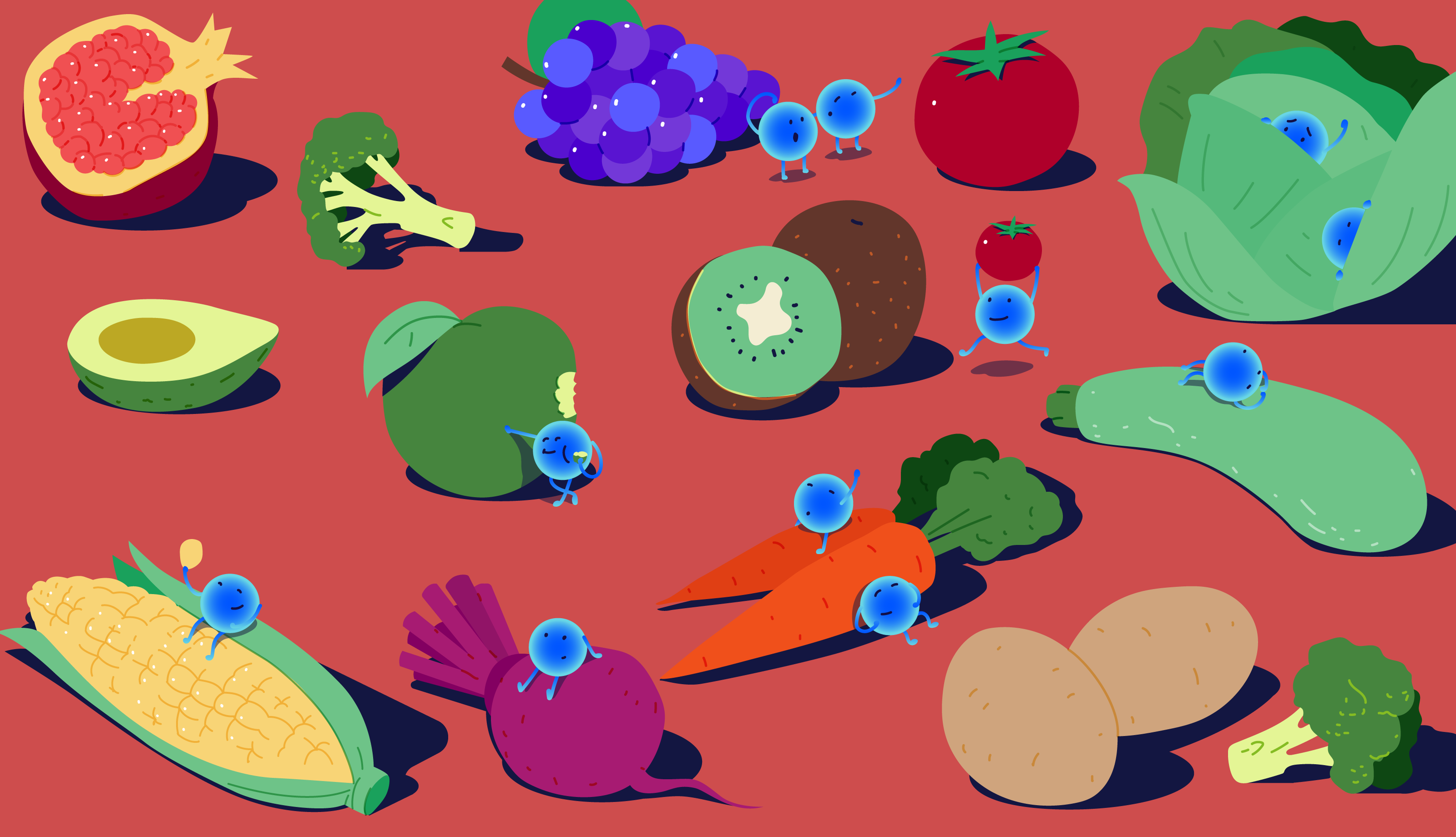Discover five important microbes that live in your colon, whose activities protect your health and digestive wellbeing.
There are trillions of bacterial cells in your gut, and some of these microbes perform important functions for your health. Preventing weight gain, controlling inflammation, and maintaining the integrity of the gut lining are just a few unique functions they perform.
Find out what ones to look out for in your Atlas Microbiome Test results, and why researchers are so impressed by what they do for the human body. They are all equally fascinating, so we’ve organised them from A-Z (not best to least best because that would be scientifically inaccurate).
| Akkermansia muciniphila: | weight management and obesity protection |
| Adlercreutzia equolifasciens: | produces an important antioxidant from soy |
| Barnesiella: | fights off antibiotic-resistant infections |
| Christensenella minuta: | lean body mass and obesity protection |
| Oxalobacter formigenes | protects against the formation of kidney stones |
1. Akkermansia muciniphila
These microbes strengthen the gut lining, and by doing so, protect against obesity and weight gain, as well as metabolic disturbances like insulin resistance.
The gut lining is an essential barrier that controls what can enter the body, and it is lined with mucus (a good thing) that strengthens it. The outer layer of mucus provides a home for bacteria while the inner layer is compact and devoid of microbes.
Scientists surmise that the inner layer of mucus acts as a filter, preventing microbes from penetrating this barrier, which can cause inflammation. It also stops them from travelling in the bloodstream to places they shouldn’t, like the lungs, where they can cause an infection.
A. muciniphila feed on the mucins (that compose the mucus layer), using them as an energy substrate. In turn, the cells of the gut lining respond by creating more mucus, controlling inflammation and building up the thickness of this important layer of protection.
2. Adlercreutzia equolifasciens
These bacteria turn compounds found in soy into a special antioxidant that may help prevent cancers and heart disease.
Soybeans have been staples of the Asian diet for millennia, and because they’re cheap to produce, they made their way into processed foods. Now, with the rise of vegetarian eating strategies, soy in its many forms (tofu, tempeh, natto, miso) has become a popular animal-friendly feature in the West.
Soybeans have been in the Asian diet for millennia
This legume contains daidzein and genistein, two isoflavones (no, they’re not German) of the phytoestrogen group that can help modulate immune system activity and prevent hormone-related cancers, post-menopausal symptoms, heart disease, osteoporosis, and even help preserve cognitive function.
A. equolifasciens has the rare ability to transform daidzein and genistein into equol, an isoflavone with stronger antioxidant activities that also has anti-inflammatory and anti-tumor effects.
Research indicates that equol may help prevent and reduce the risk of several cancers (including gastric, breast, and prostate cancers). It may also play a role in preventing hyperglycaemia linked to diabetes.
3. Barnesiella
This species has the ability to prevent pathogenic species of antibiotic-resistant bacteria from colonising the gut.
Antibiotic resistance is a growing problem in modern-day medicine. Microbes evolve quickly in response to threats, creating new weapons to survive and thrive. The widespread use of antibiotics has stimulated their evolutionary drive to avoid being killed.
In particular, common gut bacteria of the Enterococcus genus are no longer susceptible to vancomycin. This is a problem because they are apt to become overabundant in the gut of sick people, causing serious infections.
Barnesiella, a genus of bacteria, is able to prevent vancomycin-resistant enterococci from colonising the gut, and has even been used to cure infections caused by them. It can even enhance the effectiveness of immunomodulatory therapy for certain types of cancer.
4. Christensenella minuta
These hereditary microbes are more abundant in people of lean body mass, indicating benefits for weight management.
Obesity is a serious health problem nowadays, affecting adults and a growing number of children. But carrying excess adipose tissue is far from an aesthetic debate, it disturbs the delicate balance of the body’s metabolism and makes people more susceptible to chronic, preventable diseases.
Christensenella is a heritable microbe passed down through families (yes, that’s right). Studies also indicate that these bacteria are enriched in the gut microbiome of people of lean body mass (BMI <25), compared to obese study participants, suggesting links between this newly discovered genus and healthy weight control.
5. Oxalobacter formigenes
This species of bacteria has the ability to break compounds in plants that can cause calcium stones in the kidneys.
Oxalates are naturally-occurring plant compounds that are absorbed in the gut and are usually removed from the body in your urine. They have the ability to bind with calcium during their journey to your toilet, and that’s usually not a problem.
However, if a person’s diet contains too many oxalates, which are then absorbed by the colon and bind to calcium along the way, this can cause the most common type of kidney stones: calcium oxalate stones.
Stones are fine outdoors, but not when they form in the kidneys
O formigenes are fascinating because they actually break down the oxalates from your food in the gut. By doing so, they reduce the amount of oxalate absorbed by the body. Studies analysing levels of O formigenes in stool are associated with the levels of calcium oxalate in urine.
The researchers further suggest that the presence of these bacteria in the microbiome can reduce a person’s risk of calcium oxalate kidney stones by up to 70%, and having none can significantly increase the levels of this compound that pass through the kidneys.
What now?
While it’s not recommended, nor desirable, to attempt to pick and choose promoting some microbes over others, just by making simple changes to your diet can encourage beneficial bacteria to inhabit your microbiome.
A diverse gut microbiome with lots of different commensal and beneficial bacteria can enhance your protection from common diseases, help you maintain a healthy weight, and even defend you against infections.
- GC Hansson, Role of mucus layers in gut infection and inflammation, 2012
- AM Rodriguez-Pineiro & MEV Johansson, The colonic mucus protection depends on the microbiota, 2015
- FF Anhe et al., Triggering Akkermansia with dietary polyphenols: A new weapon to combat the metabolic syndrome?, 2016
- A Everard et al., Cross-talk between Akkermansia muciniphila and intestinal epithelium controls diet-induced obesity, 2013
- A Riviere et al., Bifidobacteria and Butyrate-Producing Colon Bacteria: Importance and Strategies for Their Stimulation in the Human Gut, 2016
- T Maruo et al., Adlercreutzia equolifaciens gen. nov., sp. nov., an equol-producing bacterium isolated from human faeces, and emended description of the genus Eggerthella, 2008
- KP Ko, Isoflavones: chemistry, analysis, functions and effects on health and cancer, 2014
- KDR Setchell & C Clerici, Equol: Pharmacokinetics and Biological Actions, 2010
- M Daillere et al., Enterococcus hirae and Barnesiella intestinihominis Facilitate Cyclophosphamide-Induced Therapeutic Immunomodulatory Effects, 2016
- C Ubeda et al., Intestinal Microbiota Containing Barnesiella Species Cures Vancomycin-Resistant Enterococcus faecium Colonization, 2012
- L. Madsen et al., Links between Dietary Protein Sources, the Gut Microbiota, and Obesity, 2017
- JK Goodrich et al., Human genetics shape the gut microbiome, 2015
- DW Kaufman et al., Oxalobacter formigenes May Reduce the Risk of Calcium Oxalate Kidney Stones, 2008





















